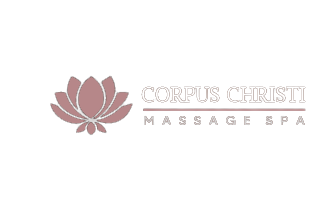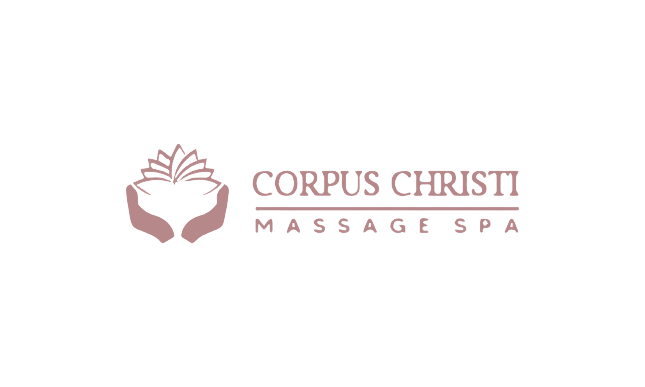Discover the Best Eco-Friendly Cosmetics Brands for Young People
In our current day and age it’s becoming increasingly important to be conscious of the products we put on our skin. But did you know that finding the right eco-friendly cosmetic brands could be just as important as making sustainable purchases? Young people especially need to be aware of the impact their beauty purchases can have on the environment, so we’re here to help you discover the best eco-friendly cosmetics brands for young people. From luxurious organic formulas to sustainable packaging, these brands represent the crème de la crème when it comes to sustainable beauty. Keep reading to find out the best of the best!
Quick Review of Key Points
Some young eco-friendly cosmetics brands that are worth your attention include EcoRoots, BaeSkye, and Plaine Products. Each of these companies create clean and safe products through sustainable practices.
What is Young Eco Cosmetics?
Young eco cosmetics are products that bridge the gap between synthetic and organic materials. With fewer chemicals and a greater focus on sustainably sourced ingredients, young eco cosmetics are a great way to get the makeup products you need without sacrificing quality or having to worry about environmentally damaging substances.
When it comes to young eco cosmetics, there are differing opinions on their effectiveness and value. On one hand, many people argue that they are an excellent option for those looking to minimize their environmental footprint while still maintaining a great look. These products often contain fewer artificial ingredients than traditional cosmetics brands, giving users peace of mind over contaminating their local environment with unnecessary chemicals. On the other hand, some people question whether these products actually work as well as their more chemically-laden counterparts, leaving them feeling frustrated at less-than-ideal results.
The truth lies somewhere in between: young eco cosmetics can indeed provide excellent results when used correctly and tend to have fewer negative effects on the environment from start to finish in their production process. To get the most out of your experience with young eco cosmetics, consider researching reviews from other customers and going with a reputable brand that uses minimal amounts of synthetic materials in their formulations.
Despite the varying opinions surrounding young eco cosmetics, one thing remains clear: these products offer a viable alternative for those trying to achieve a perfect look without depleting natural resources or exposing themselves (and our planet) to unnecessary chemicals. As such, transitioning into the next section – which explores the differences between young eco cosmetics and traditional cosmetics brands – should be easy!
The Difference Between Young Eco Cosmetics and Traditional Cosmetics Brands
Young Eco Cosmetics brands strive to make a difference in the beauty industry as a whole. Focusing on eco-friendly production, packaging and ingredients, these brands care about the environment and the consumers that use their product. However, what sets Young Eco Cosmetics apart from traditional cosmetics brands? Simply put, Young Eco Cosmetics eliminate synthetic ingredients and replace them with natural plant-derived alternatives. Furthermore, they are sure to source sustainable materials for their products. In this way, traditional cosmetics brands contribute to pollution or deforestation by using unsustainable materials.
Another striking difference between Young Eco Cosmetics and traditional cosmetics is the packaging. Young Eco brands often use biodegradable components like compostable paper or glass jars which are considered more environmentally friendly than plastic packaging. Additionally, many young eco brands offer refills and return services in order to reduce potential waste during distribution. Traditional cosmetics tend to solely promote single-use products and less sustainable packaging.
Lastly, another essential factor separating young eco cosmetics from traditional ones is the transparency of ingredient lists. Often times, we don’t know what exactly goes into our makeup products until we buy them and look at the ingredients list ourselves. By contrast, Young Eco brands ensure that their list of ingredients are posted visibly prior to purchase so consumers can clearly distinguish what they’re buying before they buy it.
The differences between Young Eco Cosmetics and traditional cosmetics go beyond just the surface level of production, packaging and ingredients – but rather call into question what we assume is “normal” when it comes to purchasing makeup products. It’s important not only to educate ourselves on how our choices may affect the environment but also to acknowledge those who have taken an extra step in doing better for our planet’s most vulnerable species – all through something as simple as changing makeup habits. And now that you have a better understanding of different Young Eco Cosmetic Brands, let’s take a look at some of the top brands you should look out for!
-
According to a 2018 report, the size of the global organic personal care and cosmetics market was valued at over 30 billion U.S. dollars in 2017.
-
A survey conducted in 2018 revealed that nearly 60% of consumers in the United States said they look for natural, renewable, or ecological information when buying cosmetics products.
-
In 2019, an article by Cosmetics Business stated that there has been a 23% increase in the growth of eco-friendly cosmetics purchased within the last year.
Top Young Eco Brand’s You Should Know About
When diving into the ethos of young eco cosmetics brands and understanding the difference between them and traditional cosmetics brands, it’s important to learn about some of the top eco brands that are being praised and featured in today’s consumer market. These young eco brands are becoming increasingly popular with consumers who don’t mind paying more for certified organic, non-GMO, sustainable, and all natural ingredients.
When looking at both sides of the argument, traditional cosmetics can be mass produced and offer affordable selection with many products ranging from $5-$20. For cheaper items with more variety, traditional cosmetics may be a good place to start. On the other hand, young eco cosmetics generally come at a higher cost of living products since they are usually produced on a smaller scale. They offer value to those interested in purchasing an ethical beauty experience with ingredients that are kinder to the environment.
One example of a young eco brand includes Avarelle Cosmetics whose mission statement is “Beauty so clean you can sleep in it.” Their natural formula free from synthetic fragrances appeals to those looking for organic skincare options. Another one is Axiology, based out of Bali Indonesia whose lipsticks (made from cocoa butter and avocado oil) were featured as one of Allure magazine’s best picks for natural lipsticks.
It is clear that young eco cosmetics are tightly rooted within their ethical mission and performance compared to traditional cosmetics brands which greatly appeal to younger generations who are concerned about sustainability practices. As consumers become more aware of what goes into their products and prioritize ethics into their routine purchases, these niche young eco brands continue to take off in popularity.
As we move onward and transition our discussion onto Ellovi, a look into the trailblazing company will outline why this trendsetting company continues to succeed.
Ellovi
The fifth eco-friendly cosmetics brand, Ellovi, is all about improving the health of skin and promoting sustainable living practices. The company takes a holistic approach to their products, emphasizing the importance of natural ingredients and resources that can be easily replenished over synthetic produced ingredients with questionable effects. They source their ingredients from farmers who use farming methods that are both organic and fair trade certified. When it comes to packaging, Ellovi ensures the materials used to package the product come from sustainable sources, such as paper or recycled plastic. Additionally, they donate 1% of all sales to organizations who focus on helping preserve our environment and giving support to people who need it most.
When considering Ellovi as a viable eco-friendly cosmetics option for young people, many debate whether this is an ideal option since there are always two sides of a coin; those in favour believe that Ellovi provides a more natural health-friendly alternative to other cosmetics brands whereas those against may state that resources such as fairtrade certified farmers could be utilised elsewhere in order to produce more nutritious food sources etc. Evidence that supports the fact that it is indeed a great option is exemplified by its natural production process, recyclable material packaging, and its commitment to sustainability through donating 1% of its sales to environmental organizations.
By investing in natural products such as those provided by Ellovi, young people have proven they understand the importance of making ecological conscious decisions regarding beauty care while still ensuring their skin’s health is well taken care of. As we shift our attention from Ellovi to our following topic, we will be delving into another eco-friendly cosmetics brand known for their various alternatives in beauty care.
Must-Know Points to Remember
Ellovi, a fifth eco-friendly cosmetics brand, is committed to promoting sustainable living practices and providing natural, nourishing ingredients in all its products. Its ingredients are sourced from organic farmers and its packaging is made of recyclable materials, and it donates 1% of all sales to environmental organizations. Young people have shown that they understand the importance of ecological consciousness when choosing beauty care products by investing in Ellovi’s natural options.
Good Vibes Only
Good Vibes Only is another brand that stands out when it comes to eco-friendly cosmetics for young people. Good Vibes Only offers a wide variety of products, ranging from lipsticks and eyeshadows to serums and face masks. Not only are their products vegan and certified cruelty-free, but they also use recycled packaging – making them even more sustainable.
The company has won several awards for their commitment to sustainability and the environment, including being labeled as “eco-conscious” by People Magazine in 2019 [Source]. The brand also prides itself in its transparent environmental practices, with all ingredients used in production displayed clearly on its website.
The argument lies in whether or not young people are willing to pay extra for premium, eco-friendly items like those offered by Good Vibes Only. From one perspective, consumers may be reluctant to shell out additional funds for an eco-friendly product, when there are alternatives that are cheaper but compromising on standards of sustainability. Consumers could be of the belief that the money spent on luxury eco-products could be better spent elsewhere. On the other hand, young people might recognize the importance of investing in quality products with benefits beyond just immediate satisfaction.
Doing so could lead to higher self-esteem and a sense of confidence regarding take responsibility for the health of our planet.
Overall, Good Vibes Only is a reliable option when it comes to providing joy and peace of mind within purchasing decisions made with young people in mind. While opinions may differ regarding ethics and morality of purchasing such products at extra cost, understanding the importance of such investments can create more environmentally conscious generations {Forbes} who understand the gravity of supporting companies whose values reflect those same beliefs. Great strides have been taken by brands such as Good Vibes Only in supporting world harmony between people and nature alike, which will hopefully inspire influencers who support eco-minded brands – paving the way for future awareness through their own stories of success – ultimately creating positive changes for generations to come.
Influencers Who Support Young Eco Brands
When it comes to the youth, influencers play a huge role in forming our opinions and guiding our choices. Young people often look to influencers for guidance into the best new eco-friendly cosmetics brands. It’s with much delight then, that we see so many popular influencers endorsing these brands—talking about their ethics and sustainability practices, promoting environmentally conscious makeup habits, and encouraging others to follow suit. This is a great reminder that “good vibes only” is not only possible, but it’s an increasingly popular mindset amongst young people looking to positively influence those around them.
With strong messages from both male and female influencers alike, there’s no doubt that those looking for sustainable cosmetics have plenty of support in making responsible decisions for themselves and for our planet! With this growing movement towards ethical consumerism there’s never been a better time for young people to find curated collections of sustainable makeup brands. Now let’s take some time to consider the nuance between “ethical consumerism” and “cruelty-free consumerism” (WEF) as making this critical distinction can be incredibly important when it comes to finding the right product.
Ethical Consumerism vs. Cruelty-Free Consumerism
The debate between ethical consumerism vs. cruelty-free consumerism is an ongoing discussion in the beauty industry that many young people may find themselves considering when choosing cosmetics brands. Ethical consumerism refers to purchasing products or supporting companies based on an ethical or moral principle, such as fair wages, use of sustainable materials, and minimizing any harm to the environment. Cruelty-free consumerism, however, refers to avoiding products that are tested on animals; some labels that qualify for this are labeled “no animal testing” or “cruelty-free”.
When it comes to debating ethical consumerism vs. cruelty-free consumerism in the beauty industry, there are strong arguments to be made for both sides. Supporters of ethical consumerism argue that while animal testing is wrong and should be stopped, consumers shouldn’t forget the other human and environmental issues a company might have — their production methods, standards of customer service, and labor practices all contribute to making a company more or less ethical. Additionally, companies also have a responsibility to their employees, local communities, and customers. By choosing ethical brands over animal testing ones, supporters of this stance claim that consumers can help create a better world by investing in businesses that promote values of social justice and sustainability.
Those who support cruelty-free consumerism lean towards boycotting companies who test on animals for any purpose whatsoever — no matter how convincing their ethical standards may be. This argument claims that animal testing is unethical frivolous and should not be supported with consumers’ money at any cost. Many people feel strongly about this view because they say investing in alternatives like modern cell cultures could significantly reduce animal testing and the amount of animals used in experimentation labs overall.
No matter which side of the debate young people find themselves arguing for when it comes to these two forms of consumerism, it’s important to keep in mind companies who are both cruelty-free AND ethically responsible where possible. The best option for eco-friendly cosmeticians is to look for cruelty-free products that have been produced in a sustainable way to reduce their carbon footprint and make sure their employees are treated with respect so as not to damage local communities or increase poverty levels. Fortunately there are now many options when it comes to this type of balancing act between ethical responsibility and cruelty-free production methods.
Frequently Asked Questions Answered
Where can I find information about the ingredients used in eco-friendly cosmetics?
The best place to find information about the ingredients used in eco-friendly cosmetics is on the company’s website. Companies that make eco-friendly cosmetics will typically have detailed ingredient lists and information about how their products are sustainably sourced. You can also consult third-party resources like the Environmental Working Group’s Skin Deep Cosmetics Database or GoodGuide, which rate beauty products on their health and sustainability criteria. Additionally, speaking to a knowledgeable storeperson at the beauty department of your local grocery store or pharmacy can provide you with helpful advice about green cosmetic product options.
What environmental impact do eco-friendly cosmetics have?
Eco-friendly cosmetics are those products which are made with the environment in mind. This means that manufacturers use ingredients and production processes which reduce their carbon footprint and minimize waste, while still delivering high-quality products. The environmental impact of eco-friendly cosmetics is significant, as it reduces the amount of energy and resources used to create the product, resulting in lower emissions and less pollution. Additionally, eco-friendly cosmetics often contain fewer harsh chemicals than traditional cosmetics, meaning fewer toxins are released into the environment. Lastly, many eco-friendly beauty products are cruelty-free, ensuring no animals were exploited for testing or production.
What are the benefits of using eco-friendly cosmetics?
The benefits of using eco-friendly cosmetics are many and varied. Firstly, they provide a healthier alternative to traditional cosmetics in terms of ingredients, meaning they are made without potentially harmful chemicals, synthetic dyes and fragrances. This makes them ideal for those with sensitive skin or allergies. Secondly, using eco-friendly cosmetics is more sustainable for the environment as these products avoid single-use plastics and packaging that can end up in landfill. Lastly, eco-friendly cosmetics tend to be cruelty free, meaning there’s no animal testing involved – something which is increasingly important to young people today.




